Impulsive M8.2 solar flare erupts off northwestern limb
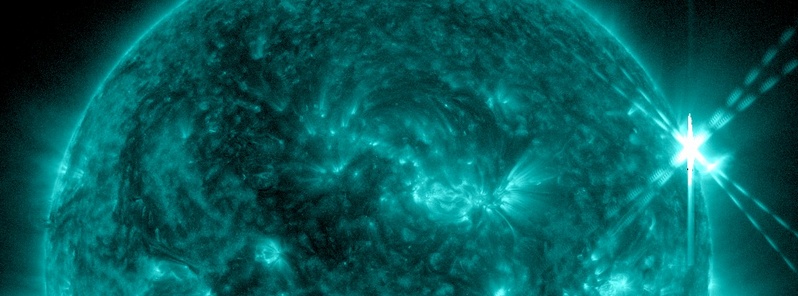
An impulsive solar flare measuring M8.2 (R2 – Moderate Radio blackout) at its peak time erupted from Region 2290 at 01:35 UTC on March 3, 2015. The event started at 01:25 and ended at 01:42 UTC.
A Type II (estimated velocity 750 km/s) and IV radio emissions were associated with this event. Type IV emissions occur in association with major eruptions on the Sun and are typically associated with strong Coronal Mass Ejections (CMEs) and solar radiation storms.
Because the responsible region is located on the northwestern limb, CME it produced should not be geoeffective.
This is the fifth M-class solar flare from Region 2290 in last 24 hours.
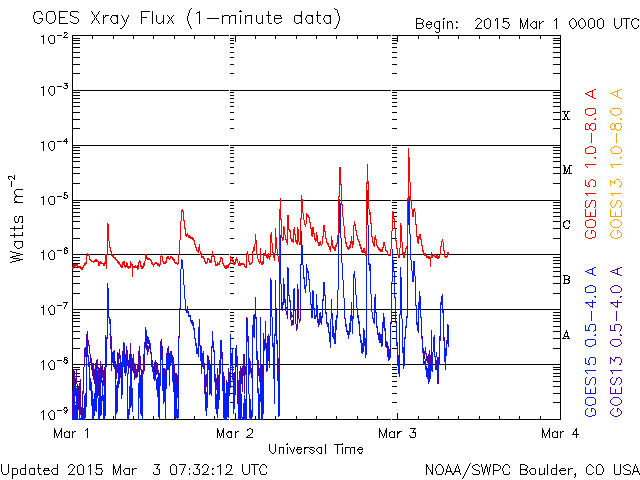
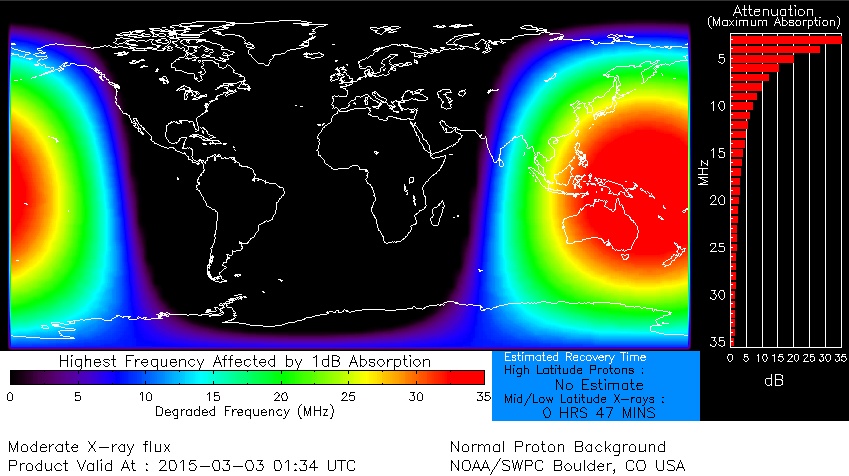
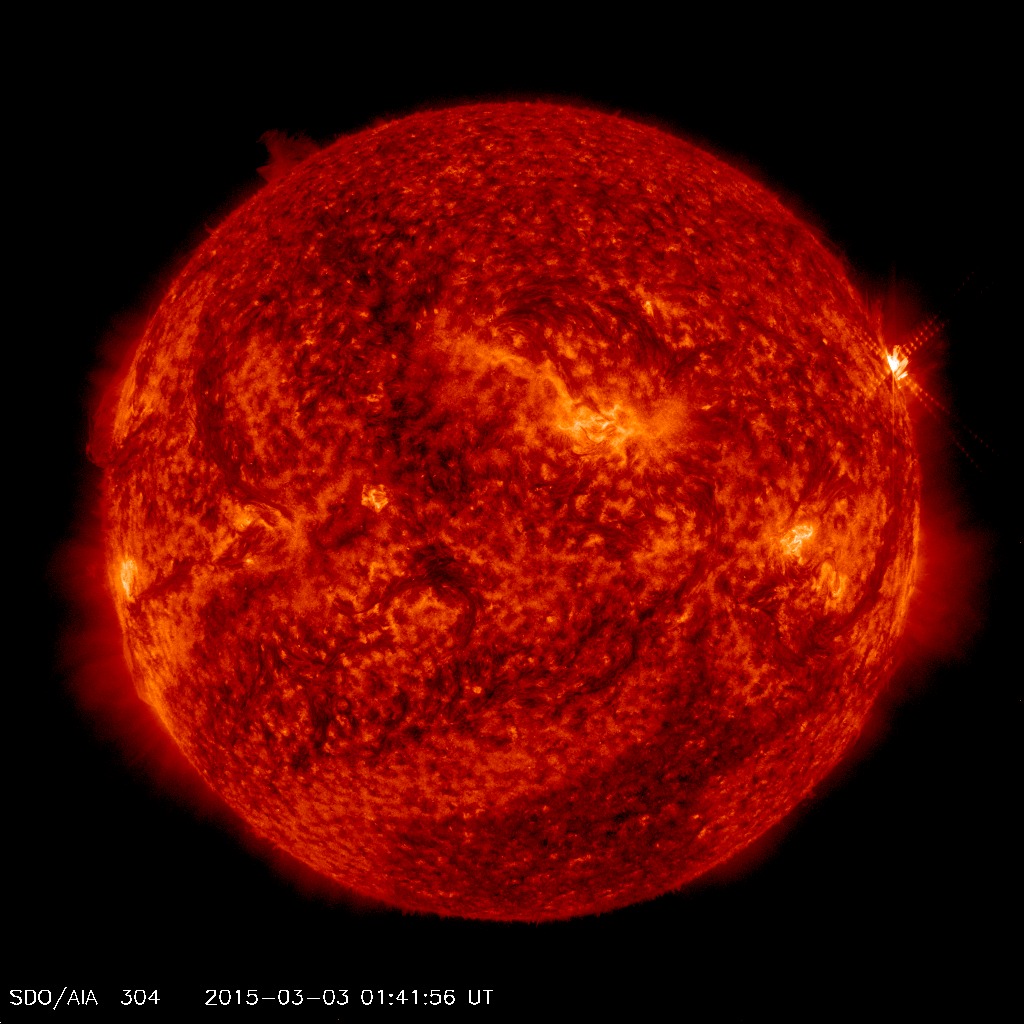
Space Weather Message Code: SUMXM5
Serial Number: 134
Issue Time: 2015 Mar 03 0158 UTC
SUMMARY: X-ray Event exceeded M5
Begin Time: 2015 Mar 03 0125 UTC
Maximum Time: 2015 Mar 03 0135 UTC
End Time: 2015 Mar 03 0142 UTC
X-ray Class: M8.2
Location: N22W94
NOAA Scale: R2 - Moderate
Comment: Region 2290, no optical flare reported.
NOAA Space Weather Scale descriptions can be found at
www.swpc.noaa.gov/noaa-scales-explanation
Potential Impacts: Area of impact centered primarily on sub-solar point on the sunlit side of Earth.
Radio - Limited blackout of HF (high frequency) radio communication for tens of minutes.
Space Weather Message Code: ALTTP4
Serial Number: 492
Issue Time: 2015 Mar 03 0527 UTC
ALERT: Type IV Radio Emission
Begin Time: 2015 Mar 03 0134 UTC
NOAA Space Weather Scale descriptions can be found at
www.swpc.noaa.gov/noaa-scales-explanation
Description: Type IV emissions occur in association with major eruptions on the sun and are typically associated with strong coronal mass ejections and solar radiation storms.
Space Weather Message Code: ALTTP2
Serial Number: 994
Issue Time: 2015 Mar 03 0529 UTC
ALERT: Type II Radio Emission
Begin Time: 2015 Mar 03 0134 UTC
Estimated Velocity: 750 km/s
Comment: Speed estimated. Preliminary report from Culgoora observatory.
NOAA Space Weather Scale descriptions can be found at
www.swpc.noaa.gov/noaa-scales-explanation
Description: Type II emissions occur in association with eruptions on the sun and typically indicate a coronal mass ejection is associated with a flare event.
Sunspots
There are currently 4 numbered sunspot regions on the Earth side of the Sun.
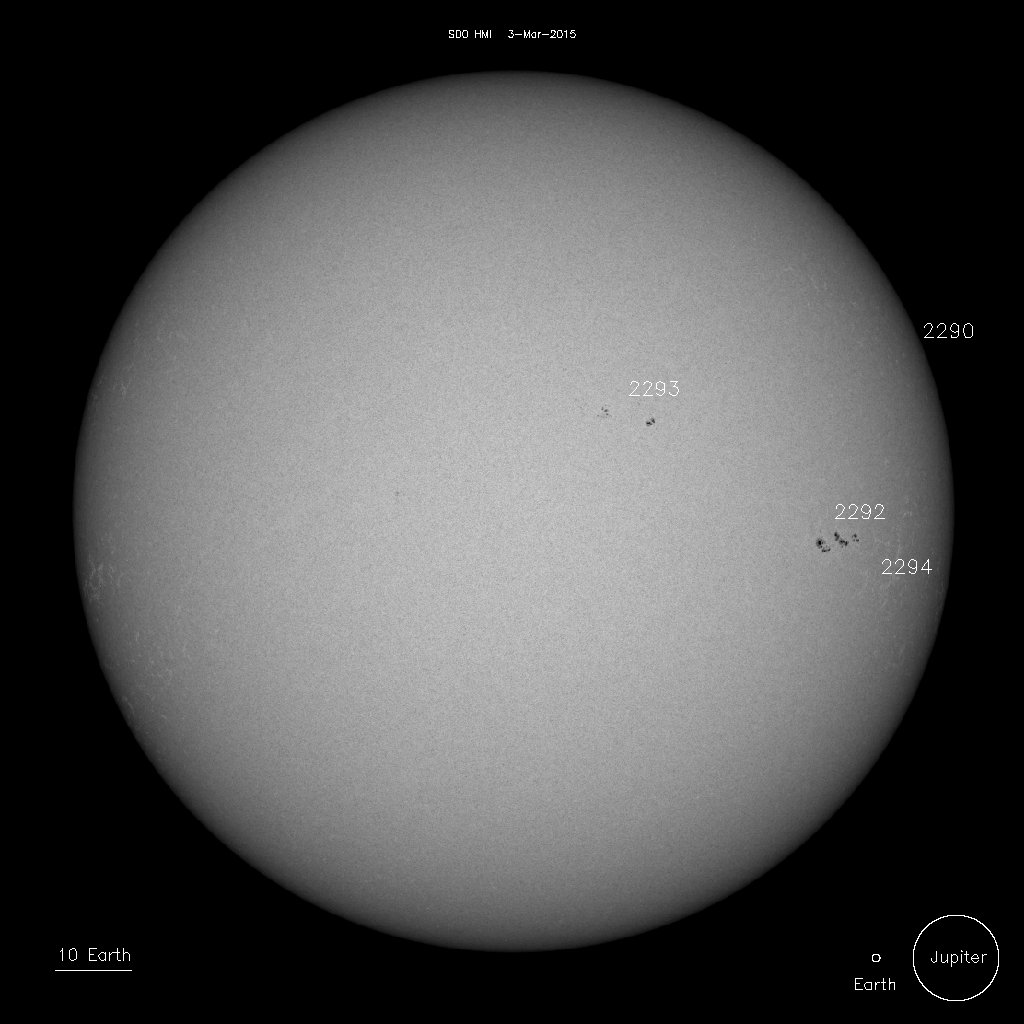
Sunspots on March 3, 2015. Image credit: NASA SDO/HMI
2290 – Alpha
2292 – Beta
2293 – Beta
2294 – Alpha
Forecast
Solar activity is expected to be low with a slight chance for M-class (R1-R2/Minor-Moderate) flare activity today as Region 2290 exits the northwestern limb. Solar activity is likely to be low on March 4 and 5.
The greater than 2 MeV electron flux is expected to remain at normal levels today with moderate levels likely and a chance for high levels on March 4 and 5 in response to the current coronal hole high speed stream (CH HSS) effects and enhanced solar wind environment. The greater than 10 MeV proton flux is expected to persist at background levels over the next three days (March 3 – 5).
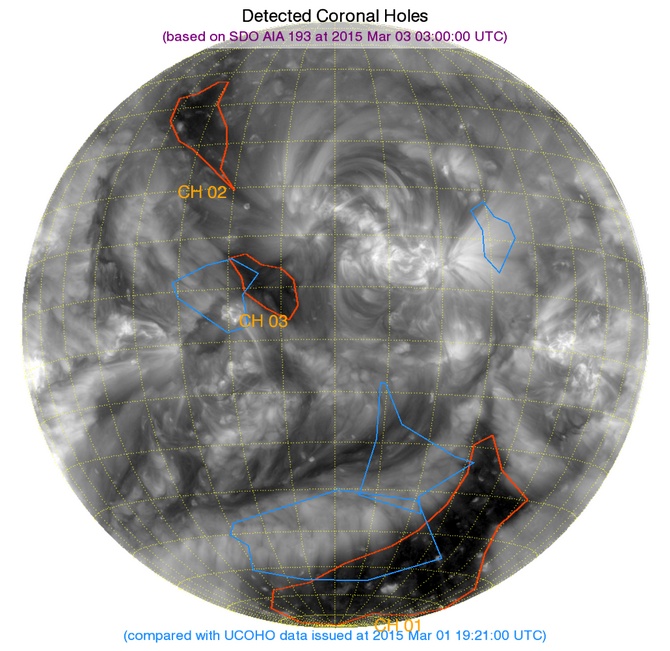 The solar wind environment is expected to remain enhanced today and tomorrow as CH HSS persists. Solar wind parameters are forecast to return to near-background levels on March 5 as CH HSS influences wane.
The solar wind environment is expected to remain enhanced today and tomorrow as CH HSS persists. Solar wind parameters are forecast to return to near-background levels on March 5 as CH HSS influences wane.
The geomagnetic field is forecast to decrease to a peak of active levels late today. Unsettled to active conditions are expected again on March 4 as CH HSS influences persist. Unsettled levels are expected on March 5 with the anticipated transition towards a return to an ambient solar wind regime.
Featured image: NASA SDO/AIA 131 01:36 UTC on March 3, 2015 – M8.2.

Commenting rules and guidelines
We value the thoughts and opinions of our readers and welcome healthy discussions on our website. In order to maintain a respectful and positive community, we ask that all commenters follow these rules.